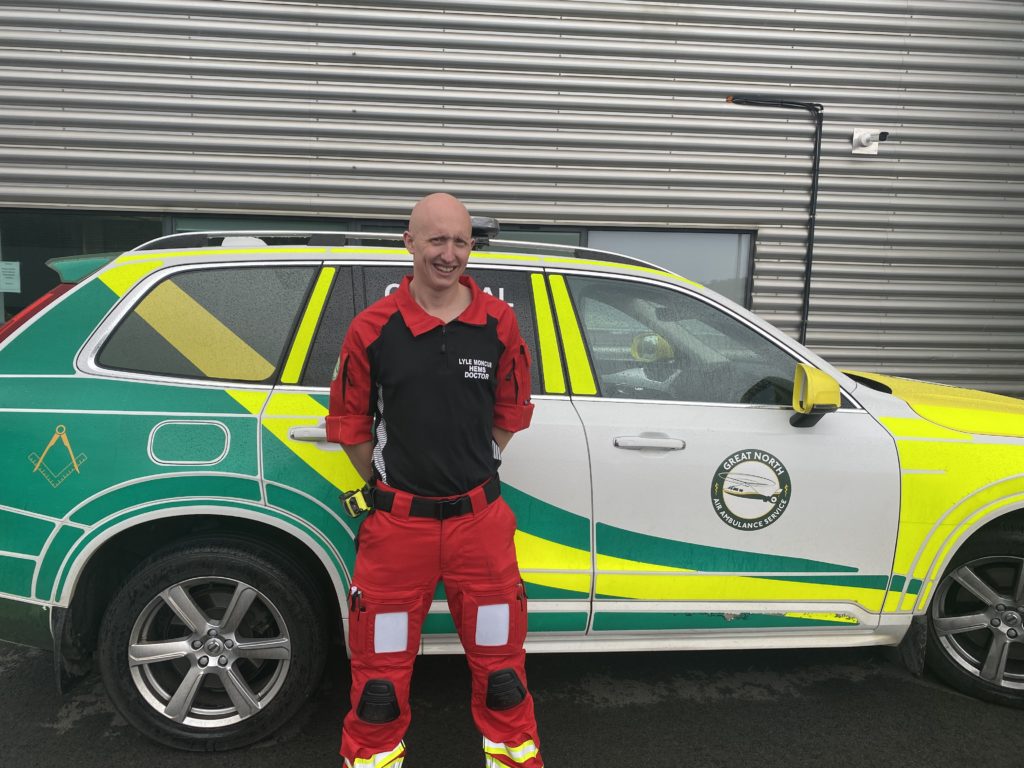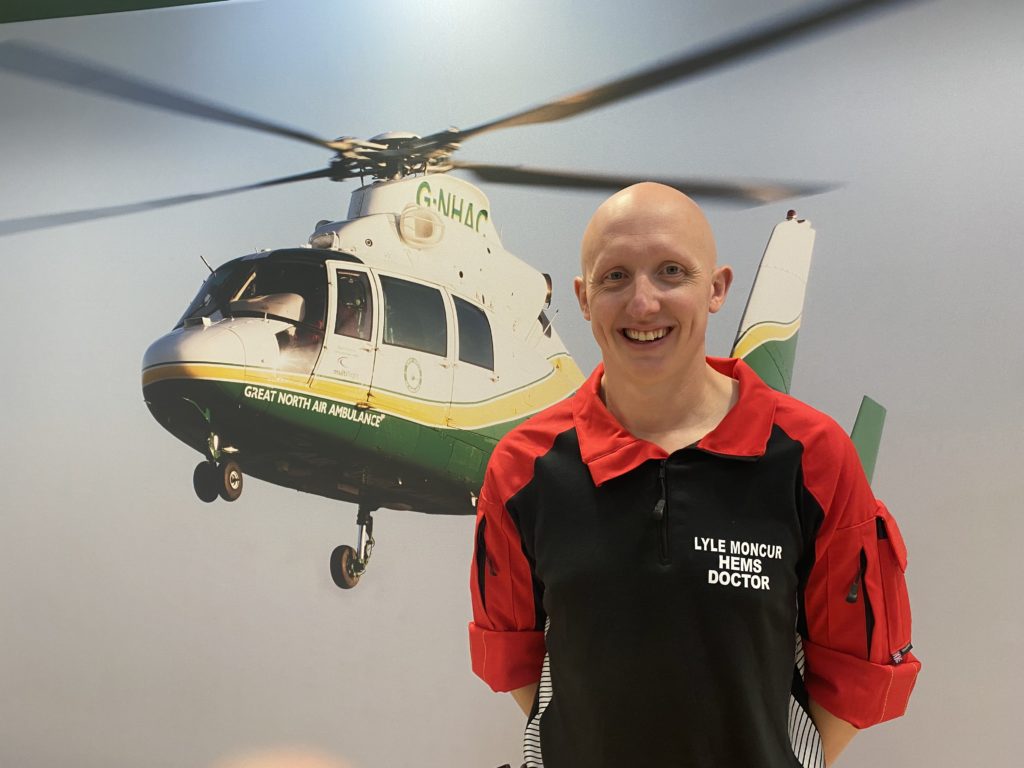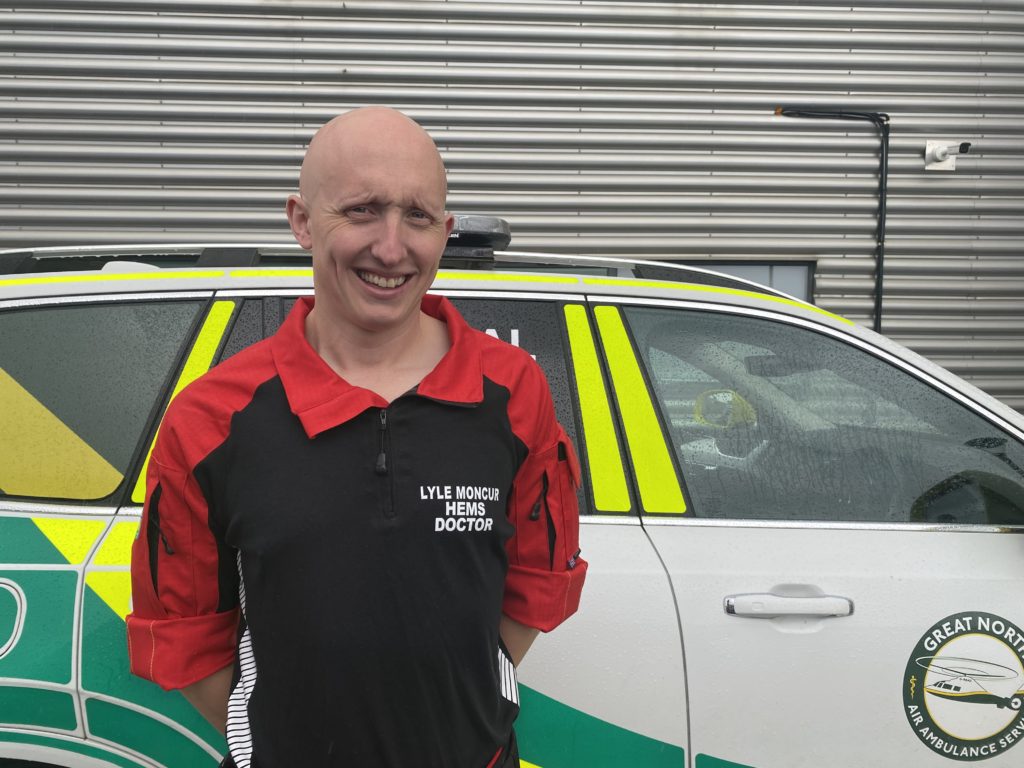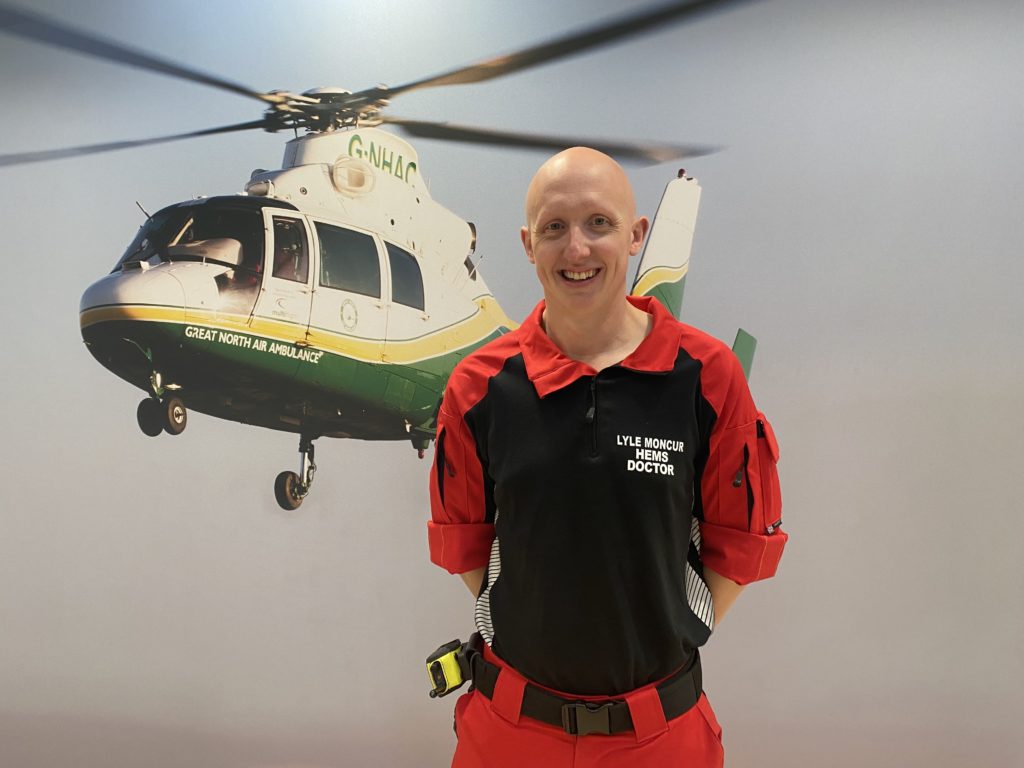“When my friends ask to go for a beer, I usually tell them I’m free in a few months.”
Just a few of months ago, The Great North Air Ambulance Service (GNAAS) employed 10 new critical care doctors in the hopes of expanding and becoming a 24/7 service.
Lyle Moncur from Edinburgh is one of those.
Lyle has already passed the charity’s intense sign-off process to enable him to fly with the organisation’s paramedic and pilot team.
Holly Taylor caught up with Lyle to find out how he’s finding the commute to the North East and how he manages his time between GNAAS, his consultant role, and having two young children.
How long have you worked at GNAAS?
I joined the charity back in May and I was signed-off just last month.
Where do you work outside of GNAAS and what is your role?
I work as a consultant in emergency medicine and major trauma in Edinburgh Royal Infirmary. I’ve worked there for a year and a half now.


Talk me through an average day in your consultant role?
If I was doing a day shift, the morning would start with a handover from the night shift staff where I’d make sure there was no well-being issues and checking if the team are ok.
If there has been a bad job or it has been a bad night, we will all chat it through and I’ll encourage the team to go and eat breakfast together and bring the night to a close before they all go home.
Then it is my job to make sure the department is ok, chat with nurses and oversee all patients, making sure that they are being looked after the best they can. I also need to find out about bed space and chat about plans for the day.
I work in the busiest emergency department in Scotland and it’s a major trauma centre for ages 16 and above so it can be really full on.
How do you manage your time working between GNAAS and your other job?
Managing my time is difficult but I have a very supportive wife who is at home looking after our two young children who are two and four and our dog.
I’m really grateful for Facetime and WhatsApp because that helps and they’re at the age now where I can speak to them on these platforms but the flip side of that is that they’re also at that age where they can give me a hard time for being away or when I have to leave home.
My wife and I have a shared calendar which also helps to manage time, so things are planned in advance but when my friends ask to go for a beer, I usually tell them I’m free in a few months. I do get some grief from the guys who don’t have a similar job to me.


Talk me through your medical career from the beginning up to now?
I studied medicine at Glasgow University and from there, moved to Plymouth to start as a junior doctor. I surfed at Uni and remembered my mate and I only chose to go there to be able to surf more.
I then moved to New Zealand where I was a junior doctor before moving back home and working at the Royal Victoria Infirmary (RVI) in Newcastle.
That’s where I first met some of the GNAAS staff and where my interest in Pre-Hospital Emergency Medicine (PHEM) started so I have done the full circle really, being back here at GNAAS now and it’s really nice.
I then did my six years of A&E training and then my PHEM training in East England. We sold our house and moved to Essex for two years where I worked for Essex & Herts Air Ambulance for a year full time and six months for East Anglia.
I finally moved back home to start my job as a consultant in Edinburgh while also working for Lincs & Notts Air Ambulance.
The job for GNAAS then came up and here I am! As I say, the full circle!
Did you always know you wanted to become a doctor?
No, I didn’t but I do remember I broke my femur when I was 16 snowboarding. That was the first time I had seen A&E stuff in action and thought I could do this.
I was always academic but spent most of my university time surfing not studying and luckily passed by exams without putting in the work – by luck.
My medical career wasn’t always plain sailing though and I had to resit my second year.
Why did you choose your field of specialty?
I’ve always been hands on and not a head in a book kind of guy.
I like the Emergency Department because I like the idea of being able to help anyone by doing the first intervention. The teamwork is also something I really enjoy and the social side of PHEM.


What’s the best/worst thing about your job outside of GNAAS?
The best thing is the teamwork. Everyone is in it together with shared values and although it’s tough you all know you’re working towards the same goal.
The hardest bit is how busy it is.
A&E is horrendous at the moment, and you can’t always help people the way you want to because it is so busy.


How do you cope with difficult jobs?
Definitely by chatting it through with my colleagues and debriefing after hard jobs.
My wife isn’t from a medical background and sometimes that’s nice to chat to her. We rarely talk about work but when we do, she knows it’s because it’s been a hard day.
Exercise also helps me to destress.
What do you like to do outside of work?
Running, cycling, surfing and spending time with my family and the dog.



